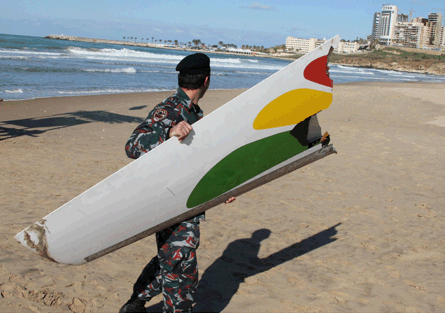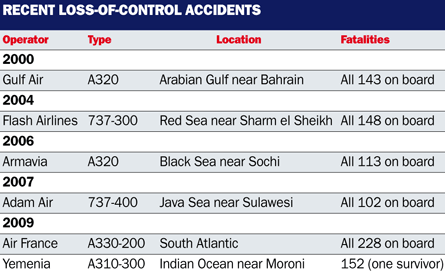If investigators determine that pilots' loss of spatial awareness caused the crash of the Ethiopian Airlines Boeing 737-800 crash in the sea off Beirut on 25 January, there will have been nearly 1,000 deaths in similar accidents since 2000.
Early indications point to striking similarities between the loss of Ethiopian flight ET409 and six other fatal airline accidents since 2000.
One of the common factors is that all were lost over the sea at night. The other is that pilot disorientation followed by loss of control is either known or suspected to have been a major causal factor. If the Ethiopian accident turns out to be like these six, this growing phenomenon of loss of control following pilot loss of spatial awareness has killed 976 people since 2000.
 |
|---|
© Rex Features |
In some of these the cause has been established officially. Accidents involving Gulf Air, Armavia, Flash and Adam Air aircraft were all caused by a combination of total or partial pilot disorientation followed by a failure to control an aircraft that could have been controlled.
The pilots in the Gulf Air and Armavia aircraft both lost effective control when they were carrying out go-arounds that involved climbing turns over the sea at night, a situation in which linear acceleration can induce disorientation through somatographic illusion. The Ethiopian 737 had to undertake a climbing turn over the sea soon after its take-off.
The Yemenia A310 is known to have hit the sea having stalled at quite low level during an attempted circling approach at night. Since there were no technical problems with the aircraft, the investigators are looking at loss of pilot situational awareness.
 |
|---|
The Air France A330 is known to have suffered airspeed sensor anomalies that caused the autopilot to trip out during the cruise at night over the South Atlantic. The French investigators say that recovered wreckage indicates the aircraft was structurally in one piece when it hit the sea, which it did in a level attitude.
The Flight Safety Foundation has, for years, noted that loss of control was a growing phenomenon, taking over from controlled flight into terrain as the biggest killer accident category since terrain awareness and warning systems began to reduce the number of controlled flight into terrain events.
Source: Flight International
















